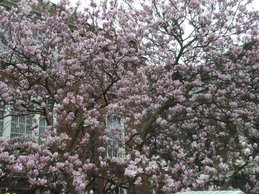A satellite eye on the EarthHurricanes, dust storms and volcanic eruptions all look serene when seen from above. Images courtesy of
Nasa's earth observatory and the
European Space Agency Phytoplankton bloom in the Barents Sea, Norway, August 12 2008
Phytoplankton bloom in the Barents Sea, Norway, August 12 2008. Phytoplankton are tiny plant-like organisms that are the foundation of the ocean food web. Like plants, they contain chlorophyll that they use to harvest sunlight for photosynthesis. In northern waters, these organisms are starved for sunlight much of the year, but during the summer months, they explode in colourful blooms such as this one
 Kasatochi volcano, Aleutian Islands, August 8
Kasatochi volcano, Aleutian Islands, August 8: Dormant for 200 years this small volcano in the Pacific erupted without warning on August 7. The volcano’s plume is seen here as a brown streak in the cloud. No one was hurt, but two biologists were evacuated and the ash forced Alaska Airlines to cancel 44 flights
 Kasatochi volcano, Aleutian Islands
Kasatochi volcano, Aleutian Islands: This image of Kasatochi island was taken on September 23 2003. Until the eruption this month, vegetation (red in this image) covered the 300m (1,000ft) high slopes. Heavy surf is visible as a white fringe around the island
 Dust storm over the Persian Gulf, August 14 2008
Dust storm over the Persian Gulf, August 14 2008. Skies appear clear over Iraq, but a discernible plume of dust blows southeast, over the Persian Gulf, to Qatar and the United Arab Emirates. The dust mixes with clouds east of Qatar. The dust may have come from Iraq’s Tigris and Euphrates floodplain the previous day
 Bushfires in Arnhem Land, Australia, August 17 2008
Bushfires in Arnhem Land, Australia, August 17 2008. Abundant rainfall during the wet season in northern Australia waters the tropical savannas, where grasses can grow as high as three meters. During the dry season (southern hemisphere’s winter) these grasses fuel enormous bushfires, triggered by lightning and people. Places where the satellite’s sensor detected fire are marked in red
 Beijing, August 19 2008
Beijing, August 19 2008. Haze mixed with clouds appears to the south of Beijing, and stretches over parts of Bo Hai and the Yellow Sea. Skies over Beijing, however, appear relatively clear
 Tropical storm Fay, USA, August 20 2008
Tropical storm Fay, USA, August 20 2008: Although the storm didn’t reach hurricane strength, 75cm (2.5ft) of rain fell along parts of Florida’s coast. Here the eye of the storm hovers near the east coast of Florida while clouds from the storm stretch hundreds of kilometres east over the Atlantic, and north over Georgia and South Carolina
 Tropical storm Fay, August 25
Tropical storm Fay, August 25: After six days zig-zagging across Florida and dumping heavy rain the flooding left behind by tropical storm Fay was captured by Nasa’s Terra satellite. In the top image the flooded St John’s river can be seen snaking through the landscape. In the lower image, taken in July, the river is too small to be seen. Clouds dot the sky in both images
 Well-head flare in Libya, August 20 2008
Well-head flare in Libya, August 20 2008 Besides the smoke, few other features stand out in this arid landscape. Natural gas often surfaces with crude oil in drilling operations. A traditional method for disposing of the natural gas is to burn it, especially when the infrastructure does not exist to store the gas for later use, or pump it underground
 Hurricane Gustav, August 26 2008
Hurricane Gustav, August 26 2008: Churning over the warm waters of the Caribbean Sea, Gustav formed very quickly on August 25. Within 24 hours the storm went from tropical depression to a strong Category 1 hurricane with sustained winds of 150km per hour (92mph)
![]() 料 堪稱鉅細靡遺。有別於日、月、行星和恆星的有規律運動,彗星行蹤飄忽,故常被視為幸運或災難來臨的預兆。除了經常在占星學上作為預測未來的徵兆外,彗星亦 曾被誤以為是地球大氣內的現象,連希臘哲學家亞里士多德(Aristotle)也認同這種說法。直到17世紀,通過改進了的彗星軌舻計算方法,人們才發現 彗星原來是像行星般環繞太陽公轉的天體。英國天文學家哈雷(Edmund Halley)通過計算,成功預測到1758年回歸的彗星,那顆彗星也因而以哈雷命名。這次觀測和計算相♣合的空前勝利,顯示至少一些彗星是以長橢圓軌道 環繞太陽公轉。哈雷的預測是基於他發現在1531、1607和1682年所觀察到的3顆彗星,都有覑相似的軌道,推斷這3次所看到的其實是同一顆彗星,每 隔75至76年便回歸內太陽系。其他非周期性的彗星亦陸續被發現,它們擁有拋物線或雙曲線的軌道,而軌道的形狀則取決於太陽的萬有引力。
料 堪稱鉅細靡遺。有別於日、月、行星和恆星的有規律運動,彗星行蹤飄忽,故常被視為幸運或災難來臨的預兆。除了經常在占星學上作為預測未來的徵兆外,彗星亦 曾被誤以為是地球大氣內的現象,連希臘哲學家亞里士多德(Aristotle)也認同這種說法。直到17世紀,通過改進了的彗星軌舻計算方法,人們才發現 彗星原來是像行星般環繞太陽公轉的天體。英國天文學家哈雷(Edmund Halley)通過計算,成功預測到1758年回歸的彗星,那顆彗星也因而以哈雷命名。這次觀測和計算相♣合的空前勝利,顯示至少一些彗星是以長橢圓軌道 環繞太陽公轉。哈雷的預測是基於他發現在1531、1607和1682年所觀察到的3顆彗星,都有覑相似的軌道,推斷這3次所看到的其實是同一顆彗星,每 隔75至76年便回歸內太陽系。其他非周期性的彗星亦陸續被發現,它們擁有拋物線或雙曲線的軌道,而軌道的形狀則取決於太陽的萬有引力。










































